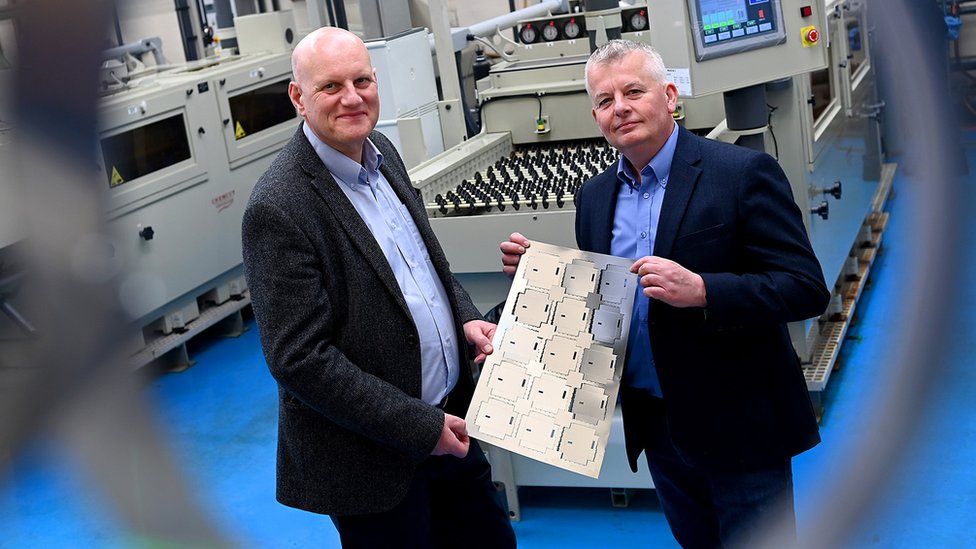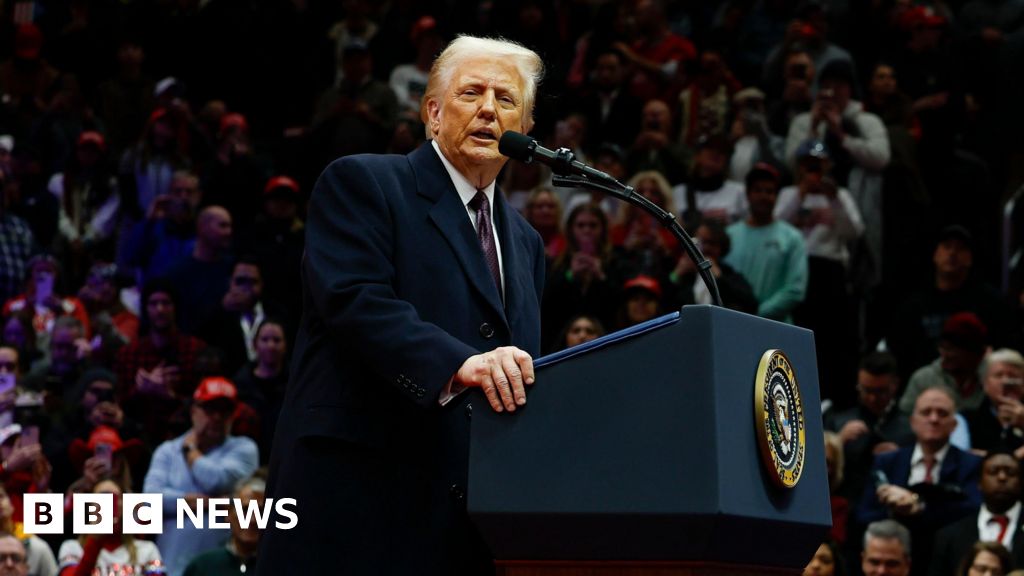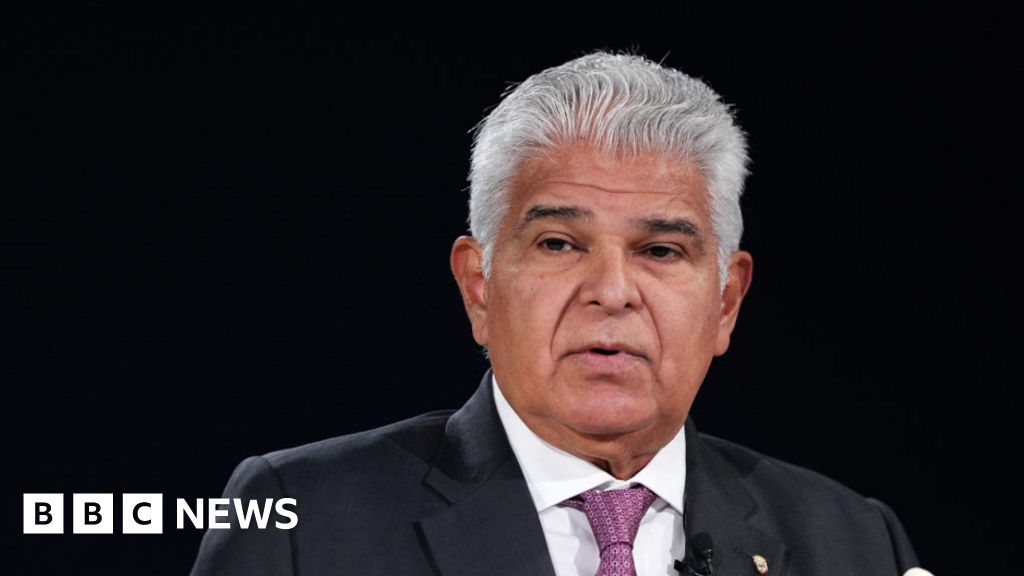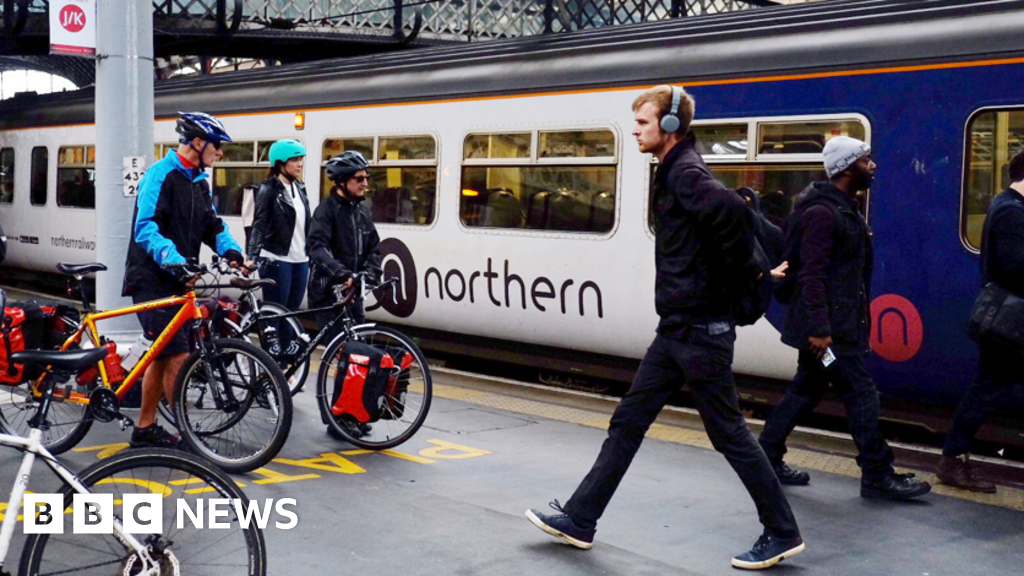ARTICLE AD BOX
 Image source, Sam Bagnall
Image source, Sam Bagnall
Ian Whateley, left, and Chris Ball have seen orders rise at their UK manufacturing firm
By Jonty Bloom
Business reporter
Chris Ball and Ian Whateley sit around a large office table and talk about how much they are benefiting from UK firms reshoring.
Reshoring is when a company decides to stop getting its manufacturing done overseas, such as in China, and instead returns the work to its home country.
Mr Ball and Mr Whateley are the bosses of Shropshire-based Advanced Chemical Etching (Ace), which makes precision metal components for customers in the aerospace, automotive, electronics and telecoms sectors.
They say that Ace's order book is greatly improving as its clients increasingly bring manufacturing work back to the UK. "We recently had a £800,000 boost in orders, with probably in the region of about £250,000 to £350,000 of that from reshoring," says Mr Ball. "And there's a lot of stuff that is just at the quotation stage too."
We have all heard of offshoring, which started as a major economic movement in the 1990's, when companies started to relocate their manufacturing abroad. They more often went to China, where incentives from the Chinese government were generous, and the workers were cheap.
The result was a Chinese manufacturing boom, and a long supply chain from Europe and the US to China and beyond.
Image source, Sam Bagnall
Image caption,Studies show that more firms in the West are reshoring
But now the West is fighting back, with an increasing trend towards reshoring. More than half of UK manufacturers are now reshoring, according to one study at the start of this year.
Other firms are "near shoring", which means that while they are still getting their manufacturing done overseas, they are moving it to a nearer country.
And then there is so-called "friend shoring", whereby you keep your manufacturing abroad, but move it to a country that has friendlier relationships with your own. Apple is said to be doing this, as it increasingly moves production from China to India.
The motives for this shift are complex and varied, but break down into three main groups - economics, risk and politics.
The big attraction of offshoring in the first place was that it was cheaper and therefore more profitable to make things in places like China or Indonesia, not least because the labour there was much cheaper. But several factors have worked to reduce those benefits
Firstly, wages have risen in such countries, while new technology means that Western factories need fewer staff, and are therefore cheaper.
Also, the increasing speed of product development is fuelling this trend. Phones, TVs, games terminals, pretty much everything is being improved, changed, and updated all the time.
It is far easier to do that in a capital-intensive factory in Birmingham or Baltimore, than one in Beijing, as Prof Dennis Novy an expert in trade economics at Warwick University explains.
"Production runs are becoming much shorter, products are changing much more rapidly, and actually having access to the manufacturers and the suppliers in a local area makes you much more flexible and that is actually a factor behind this," he says.
Then there is the "Amazon factor" - increasingly we all demand our new products tomorrow, at the latest. If they are made close by that is easy, if they are made on the other side of the world there are obviously delays, or the company has to hold large stocks of goods in case of orders which have to be filled immediately.
Stocks which are costly to hold and will be out of date the second the product is updated.
Then there is the risk factor, as Covid showed us the supply chains that we in the West all depend on are very long, stretched and vulnerable. It was a wakeup call for the West, is it safe to be reliant for many essential on factories on the other side of the world, shipped over huge distances?
The recent attacks on shipping in the Red Sea and the water shortage crisis that is massively reducing shipping through the Panama Canal have also shown that there are pinch points on supply chains routes that are very risky and unreliable.
Image source, Getty Images
Image caption,Reduced water levels in the Panama Canal have limited the number of ships that can pass through it
In short, you do not get Houthi attacks in the English Channel, or between Mexico and the US, although Prof Novy thinks these concerns have been overplayed. "Ultimately this is not the first time that the Red Sea has been in the news. There have been similar disruptions elsewhere… but I don't see this being a major headache."
Finally, there is the politics, in the US and Europe leaders have been encouraging the return of manufacturing. It is not just the patriotic thing to do, western governments have become increasingly aware that they are becoming dependent on potential enemy nations for their cutting-edge technology and supplies.
In America Presidents Biden and Trump have tried to address this issue, President Trump with tariffs, and President Biden with financial incentives. Mr Biden has been throwing hundreds of billions of dollars at making American industry make things in the US, especially microchips via the 2022 Chips Act. This pledged $52bn (£41bn) to boost domestic production of computer chips.
The Biden administration is also giving $15.5bn to the US electric car sector.
Lisa Anderson, head of US management consultancy LMA Consulting Group, is a supply chain expert. She says that the Chips Act "has spurred on certainly quite a bit of investment" in that sector.
Regarding the US manufacturing sector as a whole, in 2022 reshoring and foreign direct investment announcements hit their highest rate on record.
That is according to the business group that monitors this development, the Reshoring Institute. It says that record highs continued in the first half of last year, with 300,000 new jobs likely created for 2023 as a whole.
And it is not just American workers who are benefitting from US firms bringing manufacturing closer to home. Mexico is also booming, says Ms Anderson, who points out that America's southern neighbour now exports more goods to the US than China.
Mexico exported $475.6bn of goods to the US last year, up 5% from 2022, according to official US figures. Meanwhile the US imported a total of $427.2bn from China, a 20% decrease.
Mexico has all the advantages these days - cheap labour, ease and speed of access to the American market, and it is a friendly neighbour of the US inside a free-trade zone. The classic example of both friend and near shoring.
But the town of Telford in Shropshire is also doing well. Ace's Mr Ball says the firm is due to be visited by a an aerospace company, "and they're looking at bringing stuff in from other areas of the world".
Re-shoring is obviously on a roll.

 10 months ago
70
10 months ago
70








 English (US) ·
English (US) ·